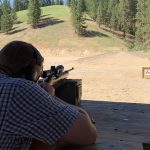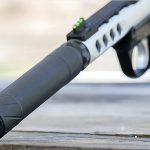The Bureau of Alcohol, Tobacco, Firearms and Explosives (ATF) is responsible for licensing persons engaged in the business of manufacturing, importing and dealing in firearms. ATFs jurisdiction and the regulatory requirements applicable to federal firearms licensees (FFL) are derived from the Gun Control Act of 1968 (GCA).
In 1993, the overall number of FFLs was approximately 284,000. By 2007, that number had declined to 109,000 total active licenses, indicating a decrease of 175,000 licensees. These numbers include licenses held for business purposes as well as those held by collectors of curios and relics.
A number of factors appear to have contributed to this decrease. The Brady Handgun Violence Prevention Act of 1993, known as the “Brady Bill,” increased the fees for federal firearms licenses from $10 per year to $200 for the first 3 years, and $90 for each 3-year renewal period.
Additionally, in 2004, ATF implemented an in-person application inspection program. ATF industry operations investigators now conduct in-person application inspections with all new firearms business applicants. Through the inspection process, investigators verify the identity of the applicant, ensure the qualification of the person(s) intending to conduct business, verify the business premises, and review the recordkeeping and conduct of business requirements to assist the applicant in complying with the law and regulations. In addition to educating the applicant about regulatory responsibilities, these efforts encourage voluntary business practices that can prevent diversion of firearms from lawful commerce to the illegal market.
ATF conducted over 5,000 application inspections in 2007, of which less than 15% were withdrawn or abandoned by the applicant or denied by ATF.
It is also instructive to note the transitory nature of FFL numbers. Each year, a significant number of licensees choose to voluntarily cease operations or fail to renew their licenses. For example, during fiscal year 2007, over 13,000 new firearms licenses were issued. However, during that same time period, the total number of licenses increased by just over 1,600 licenses.
Revocation actions taken against licensees who willfully fail to comply with the law and regulations have been an insignificant factor in the decrease of the FFLs. During the 7-year period from 1993 through 1999, ATF revoked or denied the renewal of approximately 860 firearms licenses. During the 8-year period from 2000 through 2007, ATF revoked or denied renewal of approximately 890 FFLs.
The overall number of FFLs revoked (1,750) represents 1% of the 175,000 total decrease in the number of FFLs. While the number of FFL revocations and denials of renewals has fluctuated in years past, the effect of these adverse actions on the numbers of FFLs is insignificant. Since 2005, revocation actions against federal firearms licensees have translated to only 1-2% of the FFL inspections conducted and 0.1% 0.2% of all active licenses, excluding collector (of curio and relic) licenses.















